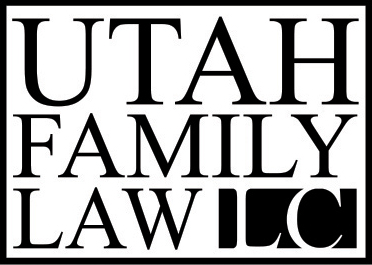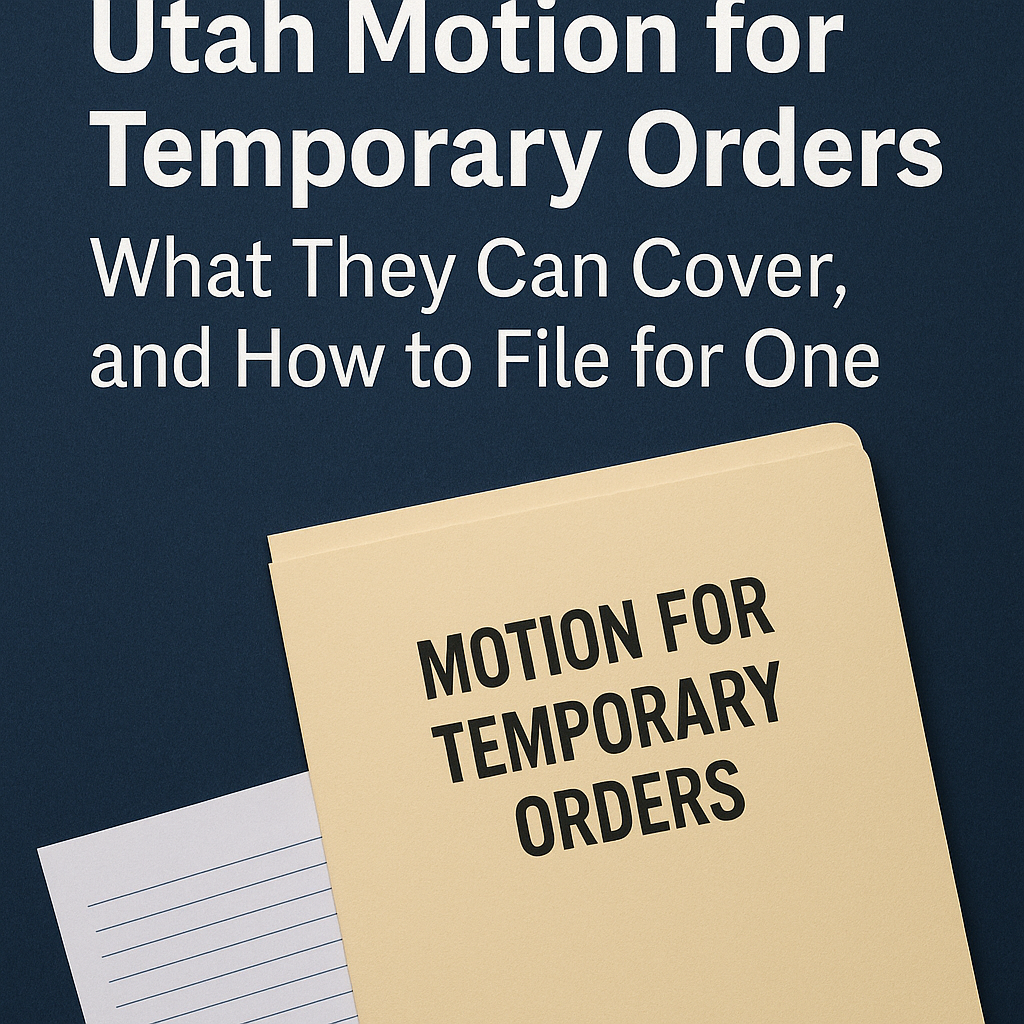When a Utah divorce case is commenced, life doesn’t stop while the case is pending. Children still need a consistent schedule. The mortgage, utilities, and insurance bills still come due. One spouse may need financial support. A motion for temporary orders is how you address these issues until final judgment.
Temporary orders are exactly that, temporary. They are designed to stabilize family matters for some or all of the family member during litigation and can be changed later if circumstances and/or the evidence change. They are no longer applicable or enforceable when the case ends with the entry of the Decree of Divorce (unless the decree adopts those orders as part of the decree), and the court can revise temporary orders mid-case on a proper motion to modify them.
The typical issues a Utah temporary-orders motion covers
- Legal and Physical Custody and Parent-time
You can ask for joint or sole legal custody (i.e., decision-making authority pertaining to the couple’s minor children) and joint or sole physical custody (with whom the children live). If you are asking for joint custody, a proposed parenting plan has to be included with your initial petition or counterclaim (or allowed to be submitted subsequently with permission of the court), or you cannot be awarded joint custody on a temporary orders basis.
Your proposed child custody and parent-time schedule should be clearly and specifically stated, and courts prefer schedules the parents can actually follow (avoid complexity and rigidity). The Utah Code provides sole, joint, and equal custody and parent-time schedules that a parent can ask the court to adopt, or a parent can propose a “custom made” custody and parent-time schedule.
Using the statutory schedules (or closely adhering to them), makes your motion more likely to be granted and makes it easier to follow the court-ordered schedule.
- Child Support
Who pays and who receives temporary child support, and in what amount, depends upon two factors: i) what the child custody and parent-time arrangement; and ii) the parties’ respective incomes. - Temporary Alimony/Spousal Support
Alimony in Utah is based upon showing need on the part of the one seeking alimony and the would-be alimony payor’s ability to pay alimony based and tied to the marital standard of living. Other factors that the court also considers are length of marriage and other statutory factors, including marital fault. The temporary period can count toward the overall duration of alimony. And if the alimony applicant is cohabiting, the court cannot award temporary alimony. If a temporary alimony recipient starts cohabiting, the court must terminate temporary alimony. - Who pays the monthly bills
It is customary for courts to allocate to one party or between both parties responsibility for the mortgage or rent, property taxes, insurance (health, auto, home), utilities, car payments, minimum credit-card or loan payments, and essential home maintenance. This is usually paired with an award to one party of temporary, exclusive use and possession of the residence and vehicles where needed or warranted. Utah’s automatic Domestic Relations Injunction (under Rule 109 of the Utah Rules of Civil Procedure) already restricts certain conduct (e.g., changing or terminating insurance coverage and disposing of property), but temporary orders can add specifics and enforcement teeth to the DRI. - Attorney fees and litigation expenses
In appropriate cases the court can order the opposing party to pay some of the other party’s attorney’s fees and litigation costs on a temporary basis.
Process and proof: the nuts and bolts
- What is filed. Motions for temporary orders must be in writing, state the relief and grounds with particularity, and be supported by affidavits/verified declarations and admissible exhibits. A party against whom a motion for temporary orders has been filed has the option of making a counter motion for temporary orders as well.
Follow the rules of civil procedure that apply as to filing deadlines, page limits, exhibits, etc. Noncompliance makes objections easy to raise and can prevent your motion from being considered.
- Mandatory attachments for support and debt/obligations issues. For alimony, child support, debt division, asset possession, or litigation expenses, you must file a verified Financial Declaration with income verification. For child support and custody issues, the child support worksheet needs to be submitted to the court with the motion for temporary orders.
What a good temporary-orders package looks like
Fair. It addresses the child’s best-interest factors and the family’s financial circumstances, not wishful thinking. Overreach is easy to spot and hurts one’s credibility. Anchor custody and parent-time requests in the facts that show why your proposal best serves the children’s best interest and does not unnecessarily infringe upon the other parent’s parental rights or unduly burden that parent’s schedule and finances.
Equitable. Break down the bills and expenses. Who can pay what, from what income or cash flow, and when, and why? Clearly show (with objectively verifiable evidence) the shortfall between the would-be alimony recipient’s financial needs and his/her ability to support himself/herself. Likewise, with objective evidence show what the would-be alimony payor is able to pay. Tie requested amounts to the marital standard of living and the factors articulated in Utah Code §§ 81-4-502 and 503.
Legal. Ensure that your motion fully complies with the rules and statutes governing the relief you seek. A court cannot grant a request that the rules of court and that statutory law prohibit a court from granting.
Rational. Proposals should be easy to understand and implement now. “Every other weekend plus Wednesday for three hours after school” is rational. “A bespoke alternating algorithm that flips on odd schooldays”?—not so much. “Husband/wife shall pay the home mortgage on the first day of each month,” “utilities to be paid by husband/wife by autopay out of his/her checking account on the 15th day of each month,” and “reimbursements due within 10 days of receiving the reimbursement request, with receipts attached” is rational.
Feasible. If one spouse simply cannot cash-flow the mortgage and two car payments and child and spousal support, your motion fails before you’ve even filed it. Scale your requests to what the would-be payor can actually pay after taxes and essential expenses. If you need a shortfall covered, say how (e.g., temporary draw on a HELOC, agreed sale of a discretionary asset, or a smaller, needs-based alimony number pending discovery).
What hurts your motion
- Unfair or punitive proposals. If your schedule sidelines a fit parent without evidence and explanation, or requests support obligations that are impossible to pay, expect the court to deny your motion, or at least deny your requests as you framed them.
- Complexity for its own sake. If the court cannot make sense of your proposals and how to implement them, the court is going to deny your motion.
- Missing paperwork. No parenting plan with a joint custody request? No verified financial evidence for money requests? You’ve just undercut your motion’s likelihood of success.
- Ignoring the Domestic Relations Injunction (DRI). Don’t ask for relief that conflicts with the Rule 109 DRI unless you explain why it is necessary or warranted.
A successful motion for temporary orders comports with the governing law and rules, proposes a fair, equitable, rational, and feasible plan, and supplies the required proof and forms. If you build your request on these foundations—and you keep your motion easy to implement fairly—you dramatically increase your odds of successfully getting orders to foster the stability your family needs while the case proceeds.
Utah Family Law, LC | divorceutah.com | 801-466-9277

